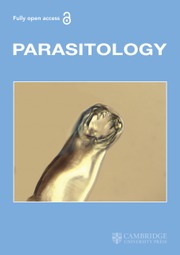Article contents
Trypanosome sociology and antigenic variation
Published online by Cambridge University Press: 06 April 2009
Summary
Survival of the trypanosome (Trypanosoma brucei) population in the mammalian body depends upon paced stimulation of the host's humoral immune response by different antigenic variants and serial sacrifice of the dominant variant (homotype) so that minority variants (heterotypes) can continue the infection and each become a homotype in its turn. New variants are generated by a spontaneous switch in gene expression so that the trypanosome puts on a surface coat of a glycoprotein differing in antigenic specificity from its predecessor. Homotypes appear in a characteristic order for a given trypanosome clone but what determines this order and the pacing of homotype generation so that the trypanosome does not quickly exhaust its repertoire of variable antigens, is not clear. The tendency of some genes to be expressed more frequently than others may reflect the location within the genome and mode of expression of the genes concerned and may influence homotype succession. Differences in the doubling time of different variants or in the rate at which trypanosomes belonging to a particular variant differentiate into non-dividing (vector infective) stumpy forms have also been invoked to explain how a heterotype's growth characteristics may determine when it becomes a homotype. Recent estimations of the frequency of variable antigen switching in trypanosome populations after transmission through the tsetse fly vector, however, suggest a much higher figure (0·97–2·2 × 10−3 switches per cell per generation) than that obtained for syringe-passed infections (10−5–10−7 switches per cell per generation) and it seems probable that most of the variable antigen genes are expressed as minority variable antigen types very early in the infection. Instability of expression is a feature of trypanosome clones derived from infective tsetse salivary gland (metacyclic) trypanosomes and it is suggested that high switching rates in tsetse-transmitted infections may delay the growth of certain variants to homotype status until later in the infection.
Information
- Type
- Research Article
- Information
- Copyright
- Copyright © Cambridge University Press 1989
References
REFERENCES
- 22
- Cited by

